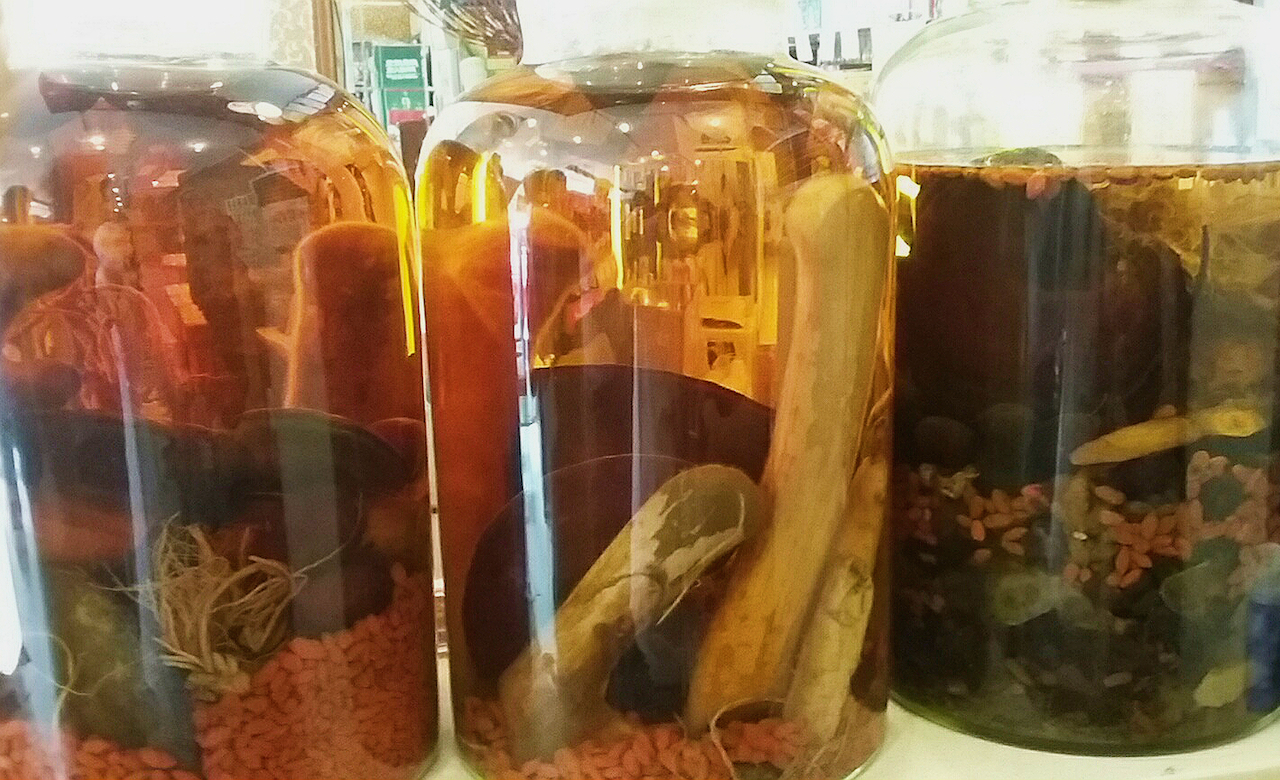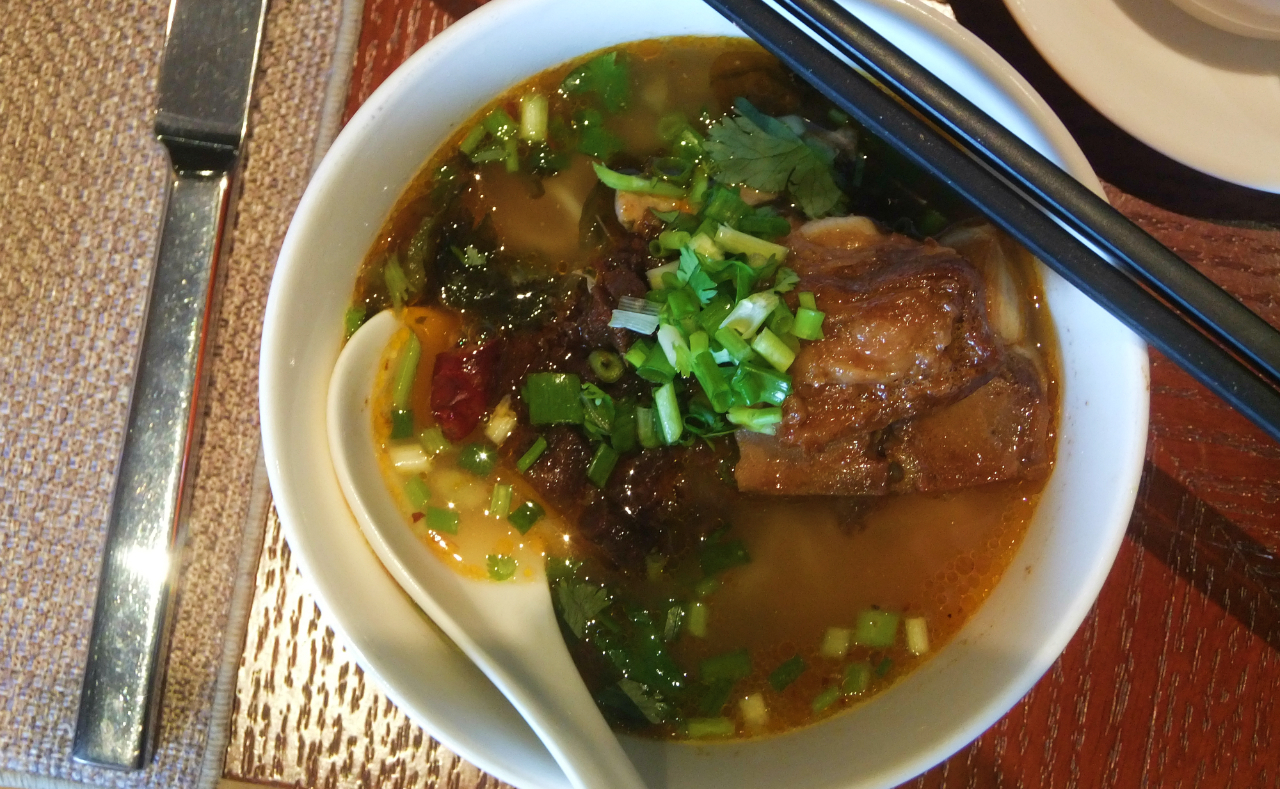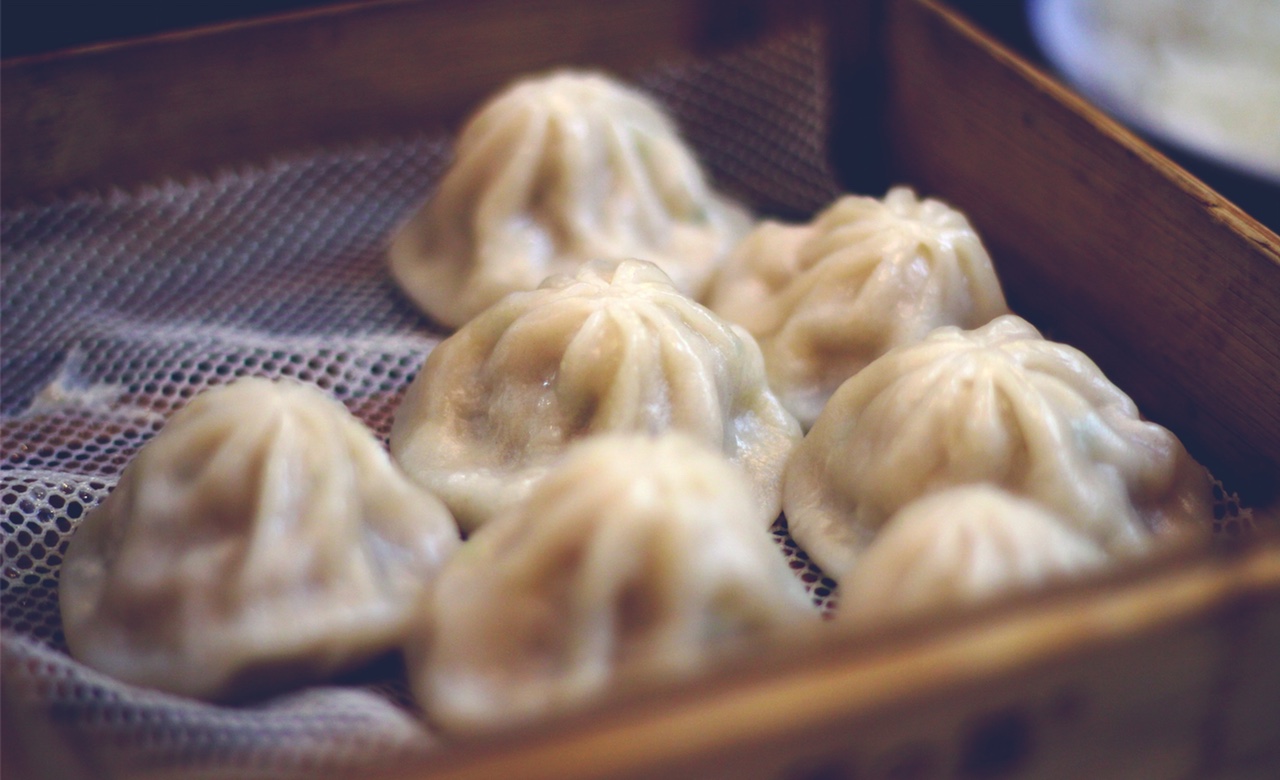Five Foods Worth Travelling to China For
Vibrant, fresh, and as you would occasionally expect, completely bonkers.
Shake off greasy combination fried rice and the mightily sweet westernised sweet and sour, the cuisine of China is vibrant, fresh, and as you would occasionally expect, completely bonkers. Wonton soup, bean curd, old tofu and congee and are all staples to start the day, multi-tiered carb dishes are kicked back with finesse and snacks on sticks include everything from whole squid to live scorpions. Courtesy of Cathay Pacific and Wendy Wu Tours, Stephen Heard ate his way from Beijing to Datong to Xi'an and back again. Here are five things he would travel back to the motherland for.![]()

Snake Wine
Fuming like gasoline, snake wine is not for the faint of heart or those after a light beverage with their lunch. Predominantly made with wheat and goji berries, the drink also comprises some ingredients that you wouldn't typically expect to find in a drink. A: snake. B: duck penis. The former delight is the only one visible in the large glass canisters, among several other unidentifiable items.
The taste that announces itself upon the first sip is something that you could liken to pure alcohol. It gives off a mighty wallop and doesn't disappear until you reach for the water jug. As told by our guide Jason, the drink is around the 38% mark and is observed as a medicinal tonic. It's known for its energy giving properties and considered the Red Bull of the east. When you can find it, a glass of snake wine will set you back around 10 yuan. And for those curious, the venoms are inactivated by ethanol.![]()

Noodle Soup
Noodle soup is the soul food of the east and regarded as one of the most straightforward meals, eaten for any given meal of the day. If it's your birthday you can even expect a complimentary bowl of 'birthday noodles' in place of cake. Styles vary from region to region, though two elements that stay the same are, of course, glistening broth and hand pulled noodles. Our guide Ray was the provider of several noodle eating anecdotes: holding your noodles above broth at face height allows them to cool, drinking broth directly from the bowl is considered very polite, and you shouldn't eat the peanut shells that come as an accompaniment...
The residents of Xi'an are playfully known as 'super noodle men' given the region's large production of wheat. Intriguing noodle varieties trialled on this trip were some topped with rolled oatmeal reminiscent of honeycomb or an alien's nest, and pancake soup found in one of the city's Muslim neighbourhoods. Called yangrou pao mo, the traditional dish of lamb in pancake or bread soup is widely known in the region. It comprises small dense cubes of dough in a glutenous soup and topped up with vermicelli rice noodles and spring onion. The carb overload will leave you bursting at the seams.
Check out our whirlwind guide to Beijing to find the city's best hand-pulled Lanzhou noodles.![]()

Dumplings
Auckland residents are fairly set when it comes to dumplings. The versions we sampled in the old country had a tendency to veer away from the fried variety and were delicate enough to not leave you feeling like a wad of dough. Rather, the potstickers were meticulously crafted; from translucent crescent-moons filled with bright orange sweet potato to palm-sized nuggets packed with juicy filling. And not to forget novelty versions in animal shapes.
Another variation and the ultimate prize-winning dumplings were: guan tang bao zi. What I'd typically recognise as soup dumplings were instead actually considered a steamed bun due to the circular shape. Each bun is filled with broth that explodes upon the first bite, though if not applying the correct technique the piping hot soup will leak before you even get to savour a drop. The trick is to pinch the top with your chopsticks and place a spoon underneath to act as a wee shelf. One bite will release the goodness. The rest is history.![]()

Peking Duck
Beijing's signature dish is generally saved for special occasions. Raised until three months old, each duck is cooked on a bamboo frame in a large woodfired oven at precisely 273 degrees to achieve the desired gold and crispy appearance. The whole bird is then sliced right before your eyes, table-side.
The head is recognised as one of the most prestigious parts to eat, sliced in half, sans beak. The texture is dry and chewy and you'll spend a good deal of time navigating bones. The melt in your mouth skin is also treasured and best paired with some of the more plumpish meat alongside the obligatory sliced leek and sweet fermented bean paste in a light and fluffy bao bing pancake.
The bao bing is the traditional way to eat Peking duck and an experience you'll want to relive after the first bite. Luckily, every part of the bird is utilised and there are 143 pieces to choose from.![]()

Stick Foods
When snacking in China you could take the exotic convenience store path, trying your luck with unidentifiable stench jerky and rice wine à la tusk, or you could do a bit of gastronomic window shopping via stick food vendors. The skewer is a popular, nonsense way to eat around the city. Name a creature and you can expect to find it by stick.
At food markets like Wangfujing Snack Street in Beijing you can expect to see everything from live scorpions to pigeon, seahorse and silkworms. While the latter are more of a novelty item for tourists, some more appealing options you'll see traipsed around the streets include chicken, whole fried squid and spiralled potato.![]()
Stephen Heard flew to China courtesy of Cathay Pacific and was taken to all the best bits by the unsurpassable guides of Wendy Wu Tours. Cathay Pacific's new A350 aircraft will start flying on the Auckland to Hong Kong route from October 31, 2016.






